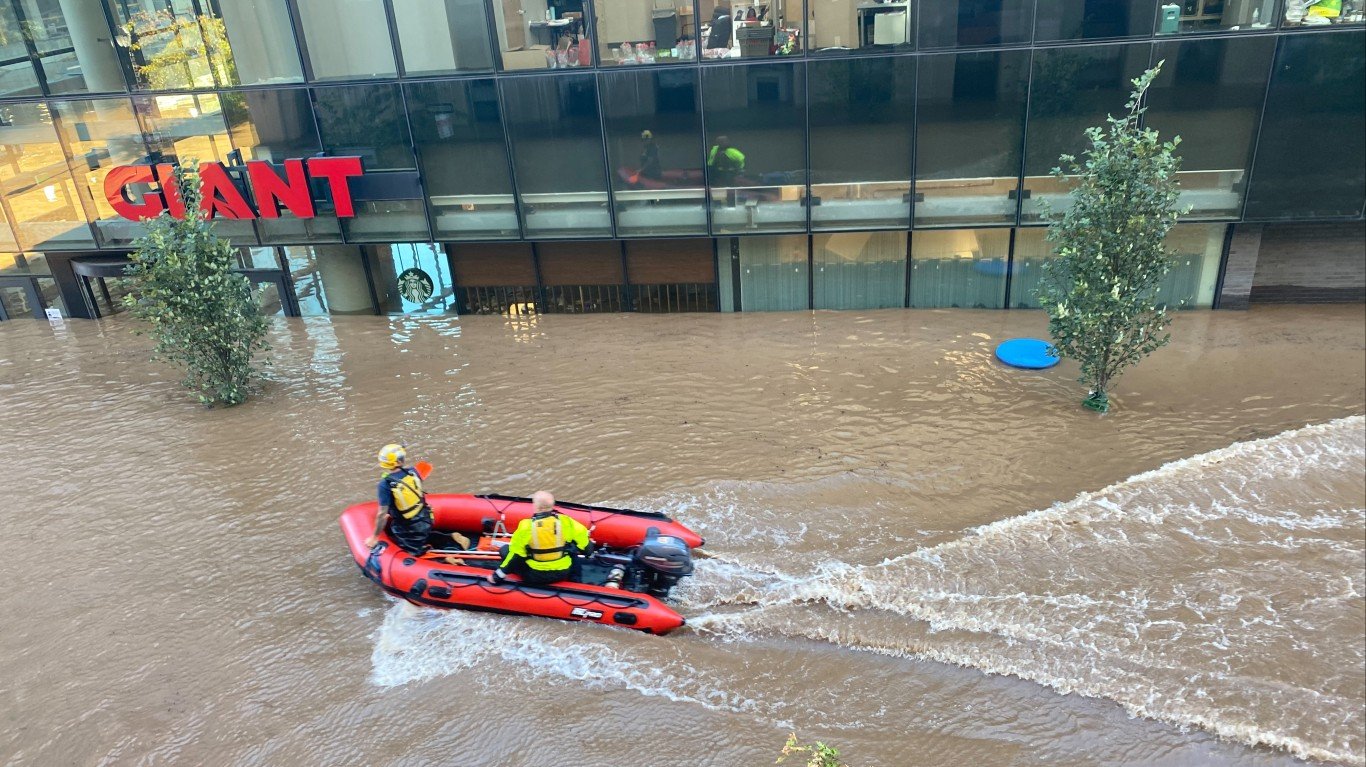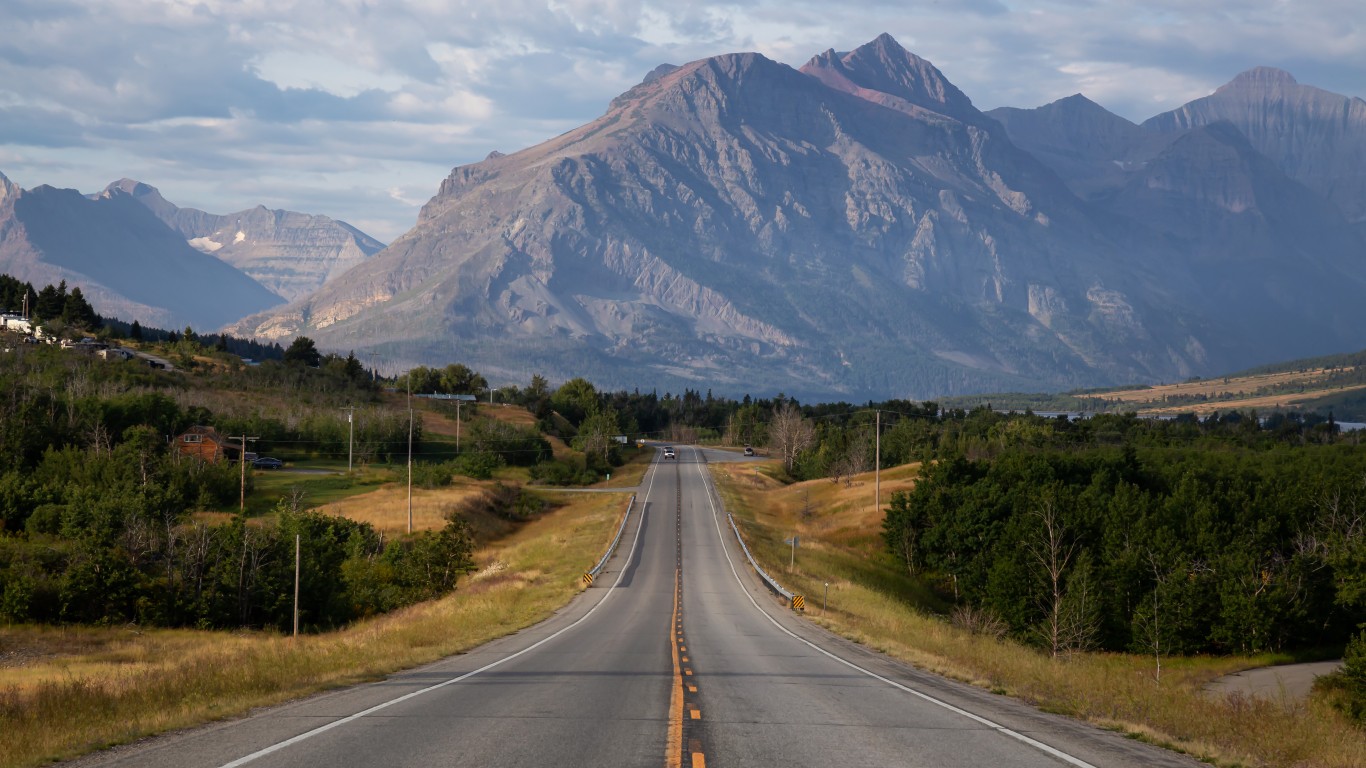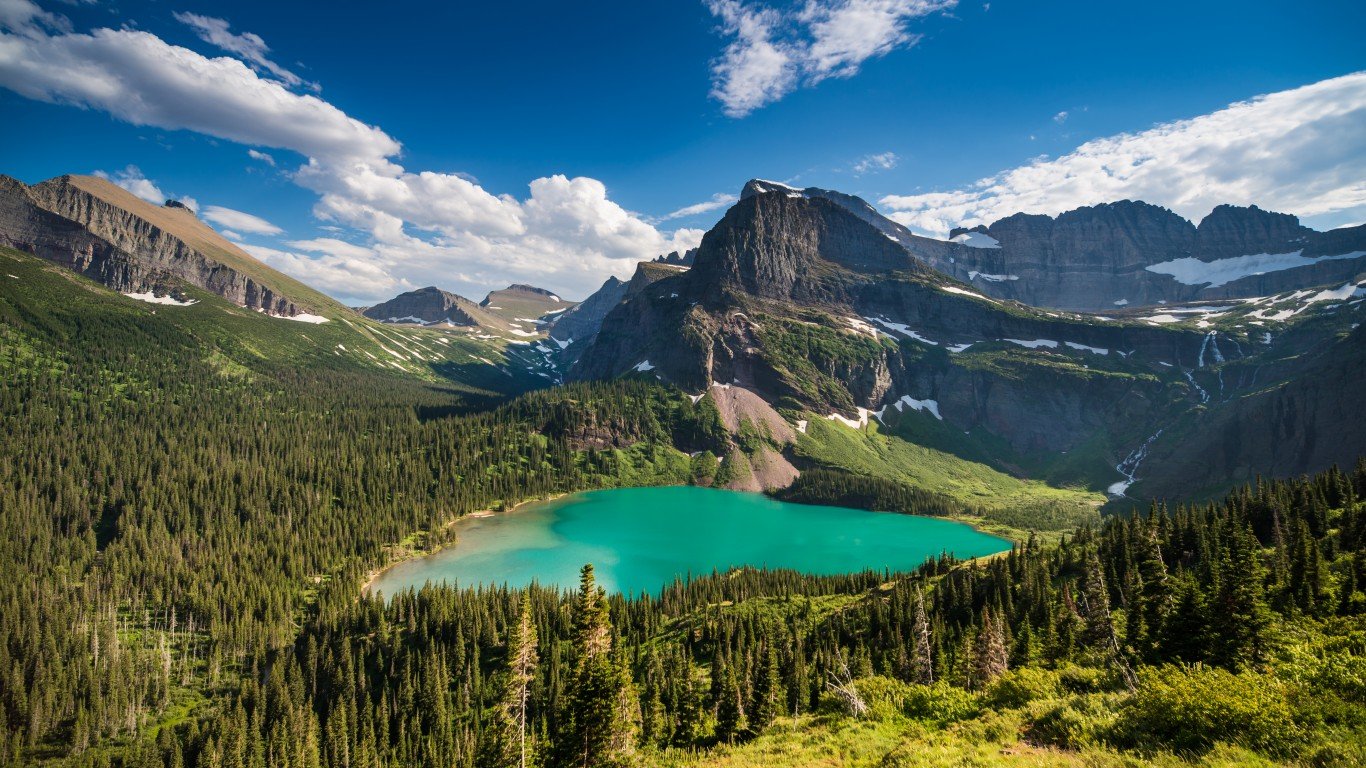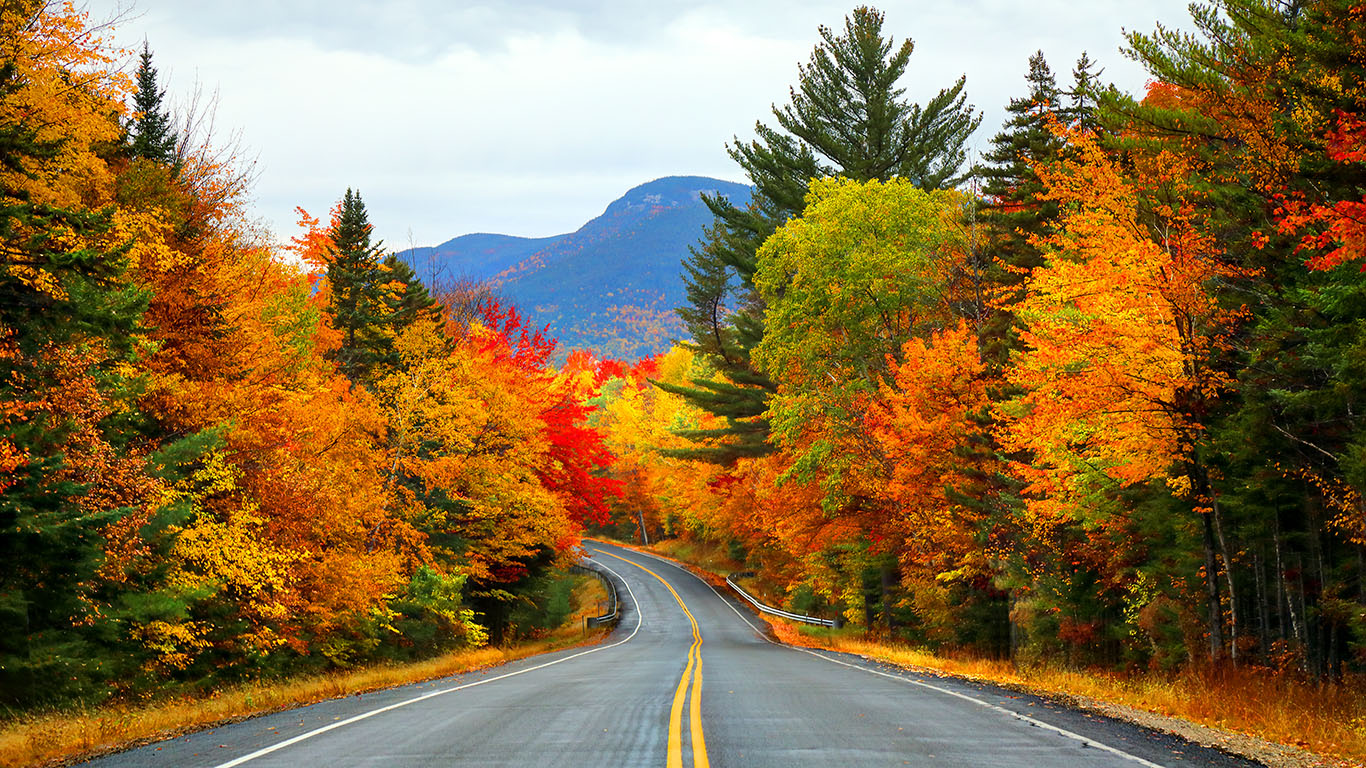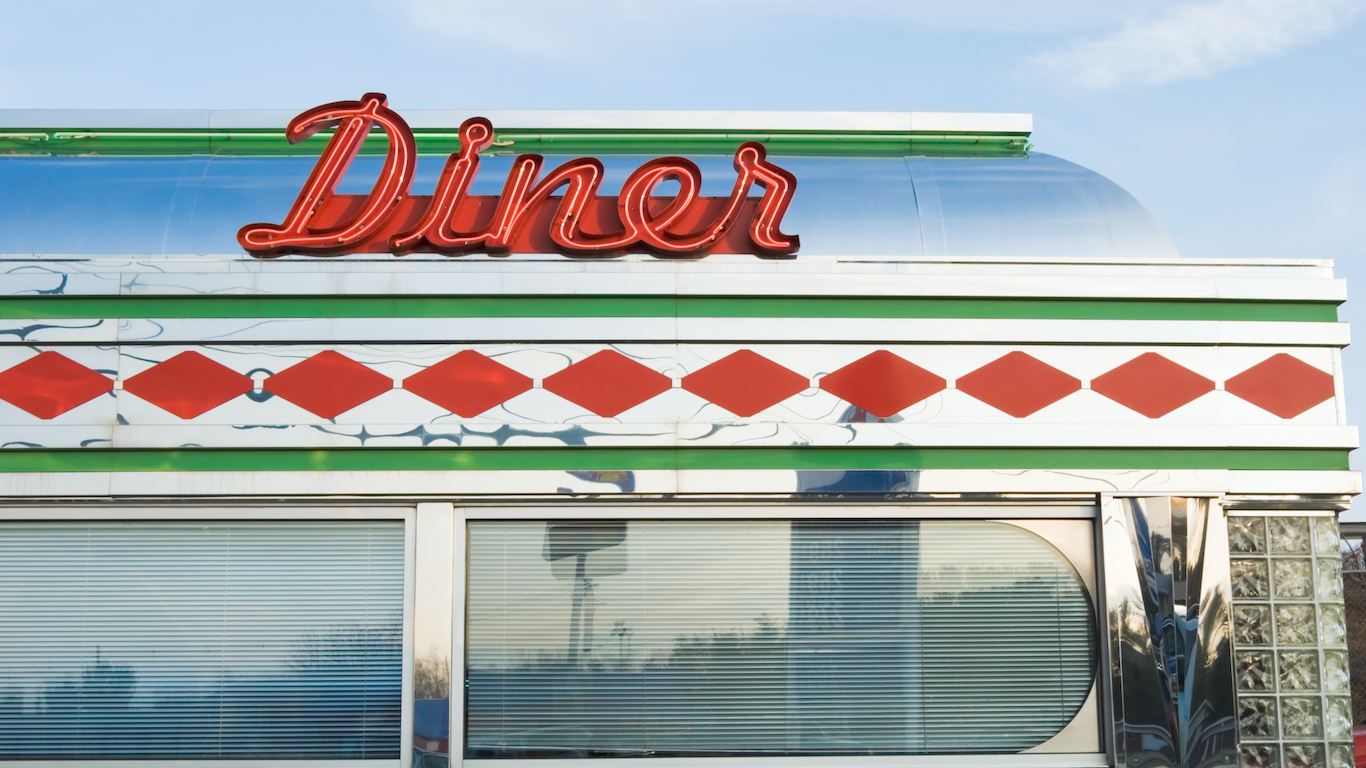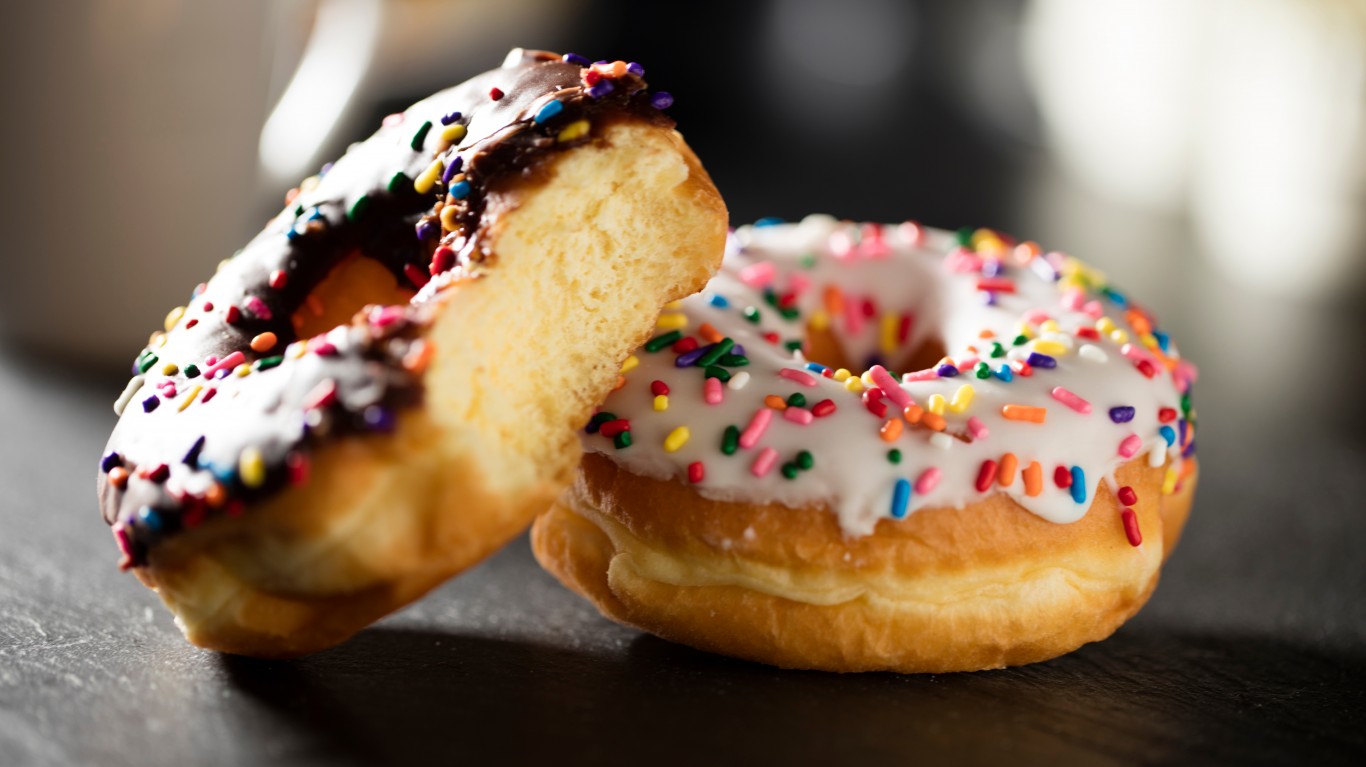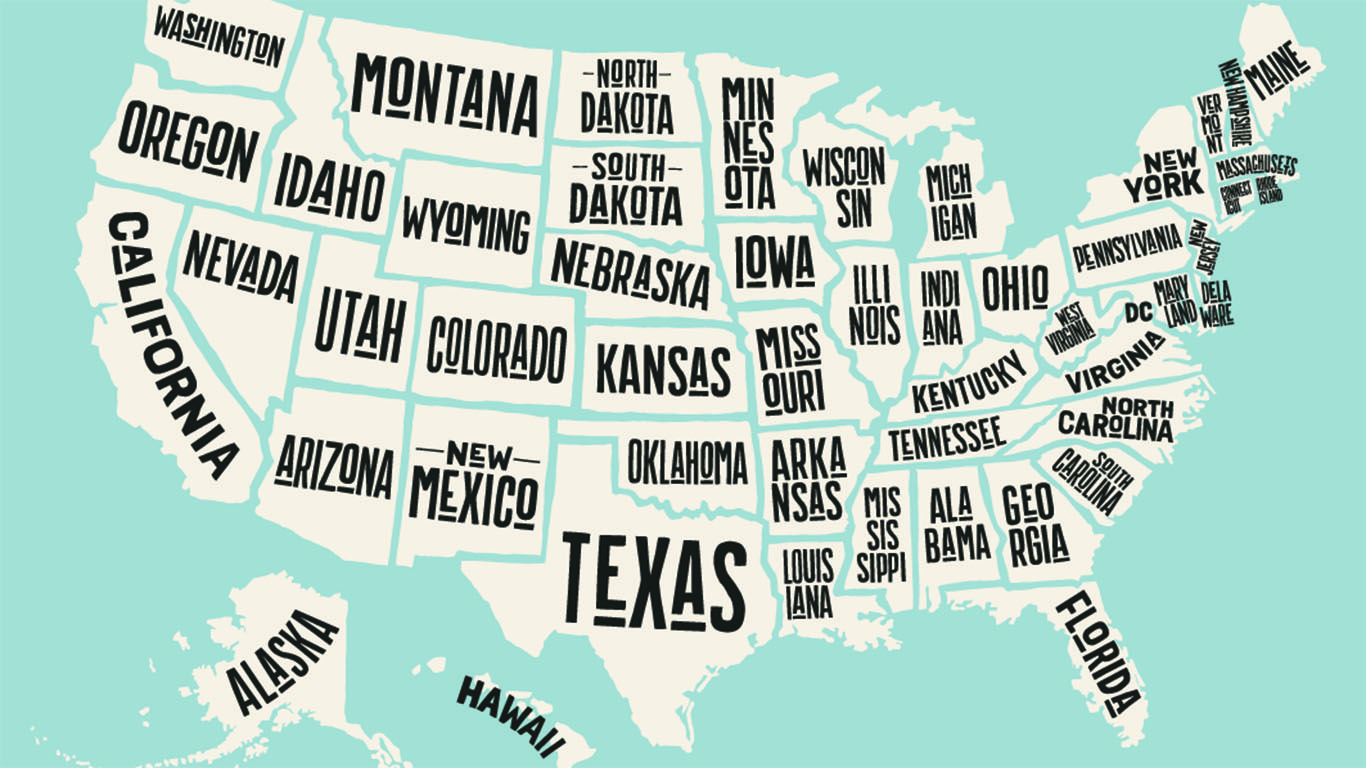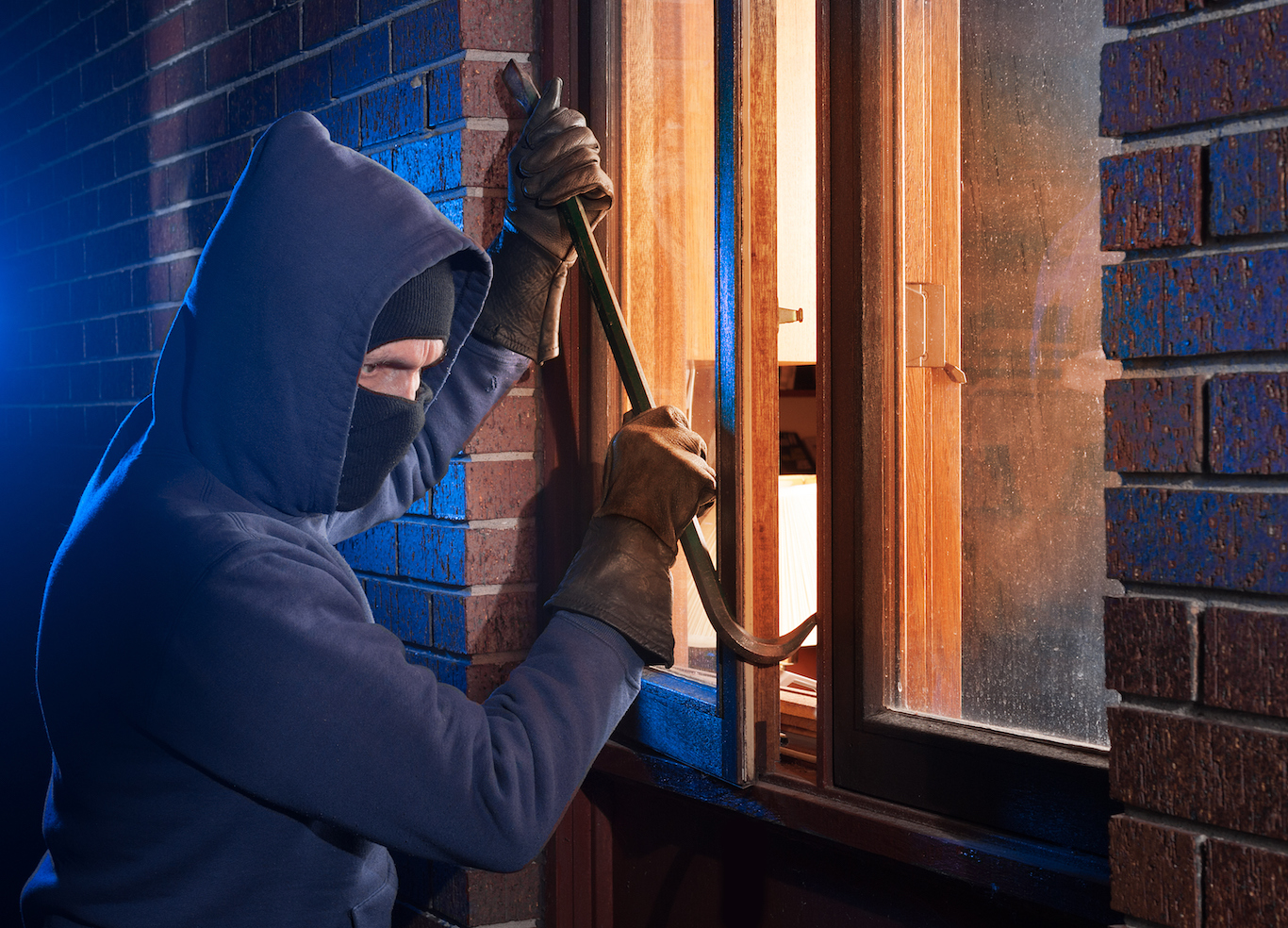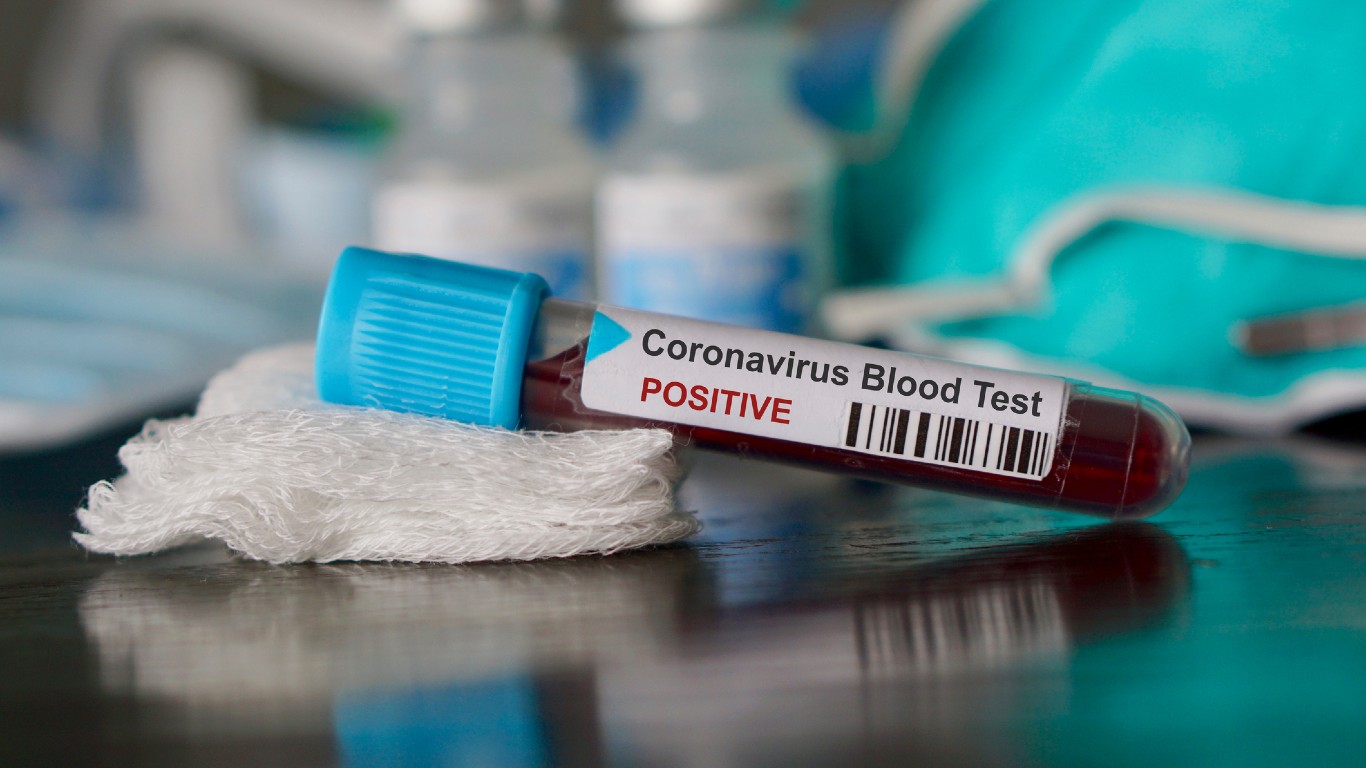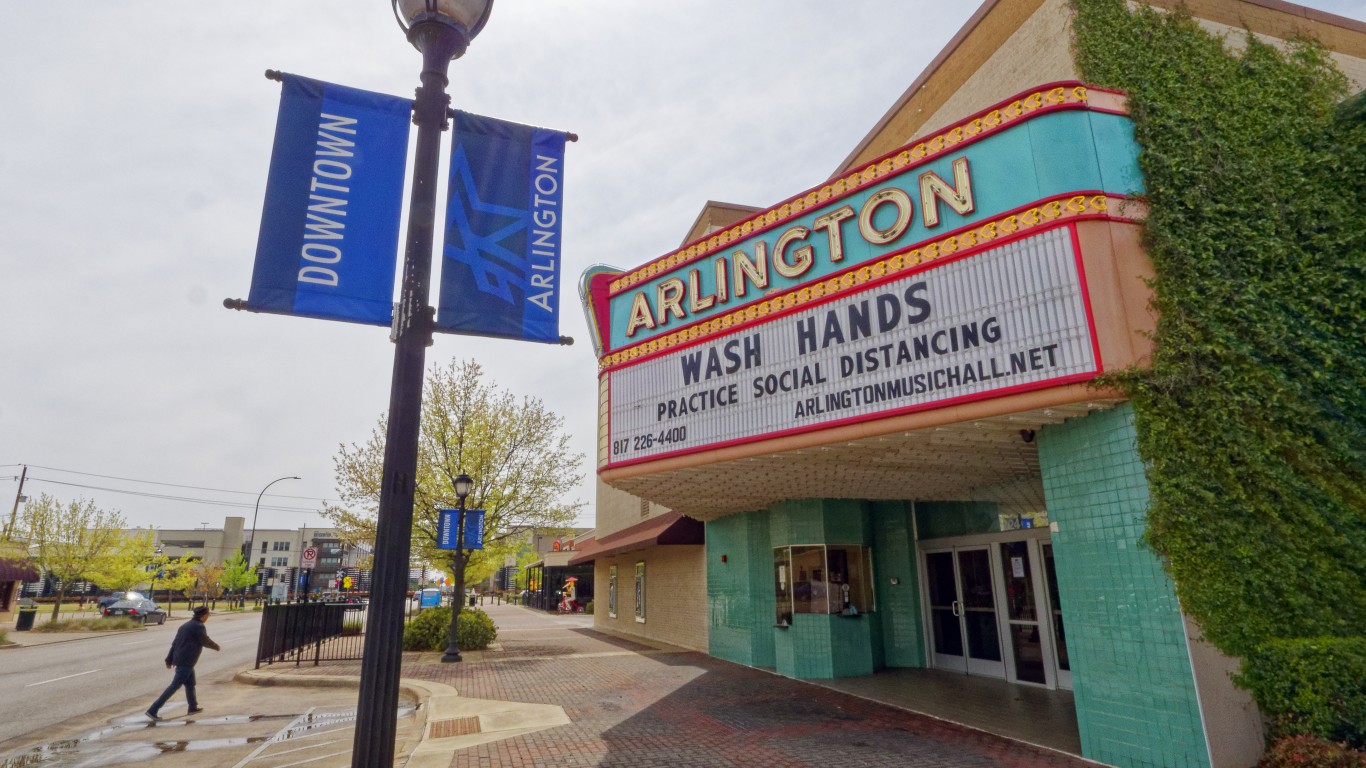Montana
It took a special act of the U.S. Congress to admit Montana as the 41st state in 1889. Although Montana is now the fourth-largest state in land area, comprising just over 145,470 square miles, its population is among the smallest, with an estimated 1.07 million residents, or about 7.34 people per square mile. The state ranks near the middle of the best states to live in list, based on key measures like its unemployment rate, poverty rate and average life expectancy at birth.
Rapid population growth often indicates how attractive a state is to new residents and their families. Over the 10-year period to 2019, Montana’s population grew by 9.0%, faster than most states, and well above the national average of 6.6%.
The unemployment rate in 2018 was 3.7%, slightly below the national rate of 3.9%. The percentage of residents living below the poverty line totaled 13.0%, just under the national average of 13.1%.
Crime in Montana
Montana’s violent crime rate of 374.1 incidents for every 100,000 residents ranks the state just below the national average of 380.6 per 100,000. In 2018, there were 34 murders in the state, the eighth lowest total in the country. While aggravated assault is the most-often reported crime in Montana (as it is nationally), the state’s robbery rate of 25.3 per 100,000 is less than one-third the national rate of 86.2 per 100,000. Robberies are less than a third of the national rate of 86.2 per 100,000.
The state’s incarceration rate is 447 adults per 100,000 residents 18 or older, essentially equal to the estimated national average of 450 per 100,000 in 2018. The most dangerous city in the state is the capital city, Helena.
Montana’s Economy
With a 2018 gross domestic product (GDP) of $49.0 billion, Montana’s economy is the third smallest among the states. Its largest industry is hospitals, which employ more than 25,000 people statewide and generate about 4.4% of the state’s total GDP. Between 2013 and 2018, the GDP growth rate in Montana was the 11th smallest among the states at 2.6%, compared to a national growth rate of 4.1%. The state’s GDP grew a scant 0.9% year over year in 2018, placing Montana as the fourth-slowest growing state.
With a near-average unemployment rate and an underemployment rate of 7.5%, Montana is a relatively difficult state in which to find full-time work. That may be due in part to the state’s high proportion of workers with a high school diploma. Some 93.0% of the state’s residents have a high-school diploma, the third-largest share in the nation. Montana’s median household income of $55,328 is lower than in most other states. The national median in 2018 was $63,179.
Thank you for reading! Have some feedback for us?
Contact the 24/7 Wall St. editorial team.

